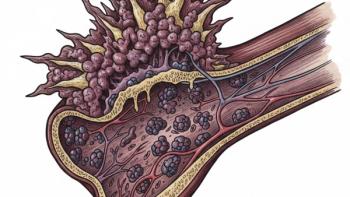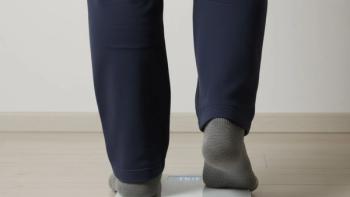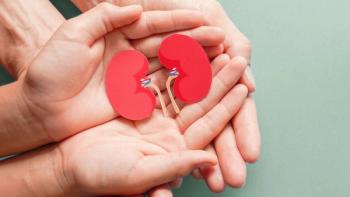
Active Surveillance Does Not Increase Stress Levels for Low-Risk Prostate Cancer Patients
Choosing active surveillance did not increase stress levels for men with low-risk prostate cancer, according to a recent study.
Men with low-risk prostate cancer did not experience negative quality of life (QOL) impacts by choosing active surveillance (AS), according to a recent study conducted by researchers with the US Department of Defense Center for Prostate Disease Research (CPDR) Multicenter National Database.
These findings suggest that a more conservative treatment approach was not a stress point for these individuals with low-risk disease.
“We found that there were really no quality-of-life differences between these two groups of men, which was a nice surprise,” said lead author Jennifer Cullen, Ph.D., M.P.H., director of the CPDR Epidemiological Research Program. “We were concerned that those who had cancer would have worse mentaal health, because of a confirmed cancer diagnosis.”
The findings suggest that AS “is a reasonable option in low-risk patients in terms of promoting and maintaining a high level of quality of life relative to those patients without cancer,” Cullen said.
Data for the years 2007-2014 were evaluated. Of the 1204 individuals who met study eligibility requirements, 420 (35 percent) had a negative prostate needle biopsy (noncancer group) and 787 (65 percent) had a positive prostate needle biopsy for cancer. Of the men with a positive finding, 411 (52 percent) were diagnosed with low-risk prostate cancer, 89 of whom were placed on AS.
Cullen and researchers used two questionnaires with established validity and reliability—EPIC, a prostate cancer specific instrument, and SF-36, a general health assessment test to determine health-related quality-of-life (HRQoL) measures. Findings were assessed at biopsy (baseline) and annually for up to three years. The researchers said they undertook the study because it is poorly understood how HRQoL of men who select AS compares with the HRQoL of men at similar risk, but without prostate cancer.
“In our study, we focused on two patient subsets—one group that was biopsied was found to not have cancer. The other group had cancer but was at such low risk that it was a comfortable option for the physician to advise the patient that he was eligible for active surveillance,” said Cullen, a research assistant professor in the department of surgery at the Uniformed Services University of the Health Sciences.
EPIC measures four paired subscales: urinary, sexual, bowel and hormonal function and bother. SF-36 measures eight subscales that can be combined into physical and mental component summary scores. Both tests offer subscale scores that range from 0 to 100, with higher scores indicating better HRQoL. HRQoL surveys were administered before or after biopsy (baseline), and at three, six, 12, 18, 24, 30 and 36 months after a positive biopsy or 12, 24 and 36 months after a negative biopsy. The researchers reported that only baseline surveys and those from 12-, 24- and 36-month points were included in the analysis.
The researchers found that the only time HRQoL trends differed were for urinary function and mental health subscales, with the group undergoing AS reporting additional decreases of approximately two points per year. Cullen and colleagues attributed this finding as a regression to the mean, particularly with regard to urinary functions, which was higher in the AS group at baseline. They reported that the changes did not result in statistically significant or clinically meaningful differences in adjusted mean scores of these subscales at three years.
The decision for a patient to choose active surveillance is a complex one, said Cullen. “A number of factors go into the decision. It could be that the physician strongly recommends it, the patient may have a preference to avoid surgery or radiation therapy, or the patient’s spouse might recommend against surgery or radiation therapy.”
She added that surgery and radiation can result in sexual, urinary, and bowel dysfunction, “so there are serious consequences in pursuing aggressive treatment. A man in his 50s or 60s may want to delay treatment because of those adverse events that affect these core functions,” she said.
The interplay between patient and clinicians is important, and Cullen pointed out that “all of the patients who participated were seen in a multidisciplinary clinic where they have a chance to meet with a radiation oncologist, surgical oncologist and even a nurse educator.” All the health team members had a chance to meet, and all treatment options were on the table, she said.
However, this setting could have biased the results, she cautioned, because the general population does not always have the same level of access to healthcare facilities and consistency in follow-up care, as in the military population who participated in the study. In addition, armed forces personnel tend to be “very loyal to this health system, so we don’t see the high rates of attrition that might occur outside of this military cohort.”
“We know overwhelmingly that most men with a prostate cancer diagnosis are going to have a positive outcome. I’m confident in saying that their quality of life remains high during the three-year period after diagnosis,” she said. “But because this is one study that examined one military cohort, more studies should be undertaken to repeat the analysis,” Cullen concluded.





